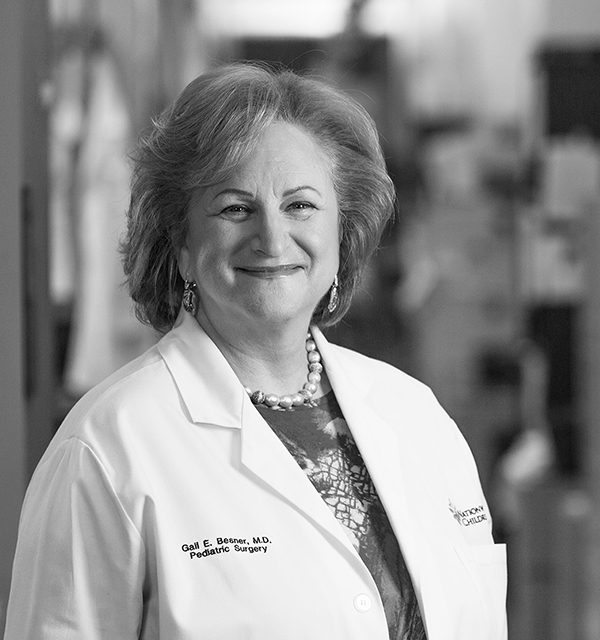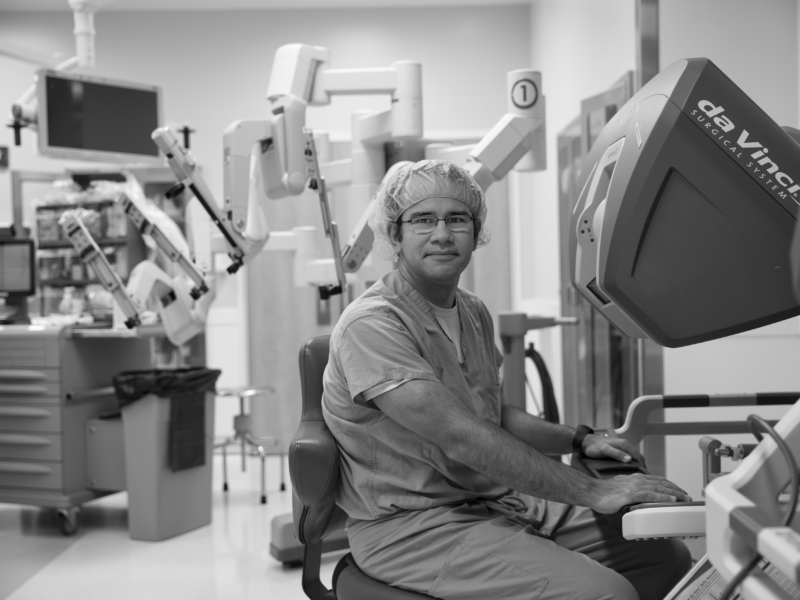A Better Way to Administer Probiotics?
A Better Way to Administer Probiotics? https://pediatricsnationwide.org/wp-content/themes/corpus/images/empty/thumbnail.jpg 150 150 Abbie Miller Abbie Miller https://pediatricsnationwide.org/wp-content/uploads/2023/05/051023BT016-Abbie-Crop.jpg- July 11, 2018
- Abbie Miller
Researchers have designed a delivery system to treat premature infants with necrotizing enterocolitis that may have applications beyond the NICU.
Most of the time, we think biofilms are bad news. And when pathogenic microbes form biofilms, they are. The biofilms created by pathogenic microbes create fortresses that make them resistant to attack by the immune system and to current antimicrobial treatments. These fortresses make eradicating infections difficult.
But what if you could use biofilms for good? That’s just what Gail Besner, MD, Steve Goodman, PhD, Michael Bailey, PhD, Lauren Bakaletz, PhD, and their teams at Nationwide Children’s Hospital are investigating.
They have developed Lactobacillus reuteri biofilm formulations that protect against experimental necrotizing enterocolitis (NEC), first described in Journal of Pediatric Surgery in 2016. A new iteration of the technology may help further reduce the incidence of NEC.
NEC is a devastating problem for premature infants. Despite decades of research, 10 percent of infants born under 1500 g will develop NEC, and we haven’t made significant progress in the prevention or treatment over the years — mortality remains as high as 30 percent for these babies.
— Dr. Besner, chief of Pediatric Surgery at Nationwide Children’s.

Bacterial colonization of the infant’s gut is critical to healthy development. Although variability exists among individuals, premature infants tend to have reduced microbiome diversity and stability, and increased numbers of pathogenic Gammaproteobacteria, according to the publication.
“Using probiotics to treat NEC is not a new idea, but administering free-living probiotics has had variable results in clinical trials,” explains Dr. Besner, also a professor of Surgery and Pediatrics at The Ohio State University. “Our idea was to develop a safe, effective delivery mechanism to support a one-dose treatment to prevent NEC. In our animal models of the disease, this is what we appear to have accomplished.”
To create the biofilm, cultures of L. reuteri are introduced to porous, biocompatible, biodegradable 50 µm diameter dextranomer microspheres. During a brief incubation, the bacteria adhere to the microspheres and form a biofilm. In the biofilm state, the probiotics have increased resistance to gastric acidity and increased adherence to the gastrointestinal mucosa compared to free-floating bacteria.
Now, the team has published the results of their latest iteration of the technology – testing the effects of enhancing the microspheres with sucrose or maltose as diffusible cargo. The study, published in American Journal of Physiology, reports enhanced performance of the single dose L. reuteri biofilm in experimental NEC.
According to the authors, in addition to reducing the incidence of NEC in animals, the enhanced formulation improved animal survival, reduced intestinal mucosal barrier breakdown and limited intestinal inflammation. The L. reuteri microspheres loaded with maltose also augmented the persistence of numerous Lactobacillus species in the intestinal tract and shifted the gut microbiome to be more similar to that of breast-fed babies.
“Given the microbiome disruption observed in preterm infants who go on to develop NEC, a treatment that preserves the microbiome holds great promise as an intervention to prevent NEC,” says Dr. Besner, who is senior author of the recent publication. “Furthermore, our novel probiotic delivery system limits the expansion of pathogenic bacteria such as Enterobacter species, providing further evidence that it attenuates detrimental NEC-induced dysbiosis.”
All of the components – the probiotic, the microsphere, the sucrose/maltose – used in the proposed intervention are “Generally Recognized as Safe” (GRAS) by the U.S. Food and Drug Administration (FDA). The scientists hope that this will be an advantage as they begin to work to develop clinical trials using the L. reuteri biofilm preparation.
“The use of these microspheres represents an exciting development in improved probiotic administration. As we continue to learn more about the human microbiome and its relationship to health and disease, probiotic administration may play an increasingly important role in disease prevention and management – not just for the application to NEC,” says Dr. Besner.
Previous clinical trials of probiotics to prevent NEC have had variable results. Dr. Besner and her colleagues believe that the novel delivery system that they have developed will offer significant advantages over L. reuteri delivered in its free-living form. To that end, they are in talks with the FDA to design a clinical trial to test the delivery system in humans.
Drs. Besner, Goodman, Bailey and Bakaletz are the scientific founders of a preclinical stage company – Scioto Biosciences – created to bring microbiome therapeutics to the marketplace.
Reference:
Olson JK, Navarro JB, Allen JM, McCulloh CJ, Mashburn-Warren L, Wang Y, Varaljay VA, Bailey MT, Goodman SD, Besner GE. An enhanced Lactobacillus reuteri biofilm formulation that increases protection against experimental necrotizing enterocolitis. American Journal of Physiology – Gastrointestinal and Liver Physiology. 2018 May 31. [Epub ahead of print].
About the author
Abbie (Roth) Miller, MWC, is a passionate communicator of science. As the manager, medical and science content, at Nationwide Children’s Hospital, she shares stories about innovative research and discovery with audiences ranging from parents to preeminent researchers and leaders. Before coming to Nationwide Children’s, Abbie used her communication skills to engage audiences with a wide variety of science topics. She is a Medical Writer Certified®, credentialed by the American Medical Writers Association.
-
Abbie Millerhttps://pediatricsnationwide.org/author/abbie-miller/
-
Abbie Millerhttps://pediatricsnationwide.org/author/abbie-miller/
-
Abbie Millerhttps://pediatricsnationwide.org/author/abbie-miller/
-
Abbie Millerhttps://pediatricsnationwide.org/author/abbie-miller/
- Posted In:
- Features







